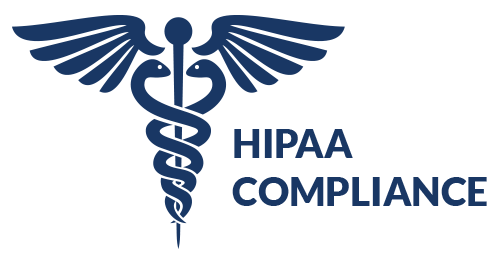For medium-sized businesses and enterprises in Tulsa, IT disruptions can have devastating financial and operational consequences. Whether due to cyberattacks, natural disasters, hardware failures, or human error, unplanned downtime can bring operations to a standstill. Implementing a robust IT disaster recovery plan ensures that businesses can quickly recover from disruptions and maintain business continuity.
What is IT Disaster Recovery?
IT disaster recovery refers to the strategies, processes, and technologies businesses use to restore IT infrastructure and data after a disruption. Whether caused by cyberattacks, hardware failures, natural disasters, or human error, IT disaster recovery ensures that businesses can resume operations quickly, minimize data loss, and reduce financial impacts.
Why IT Disaster Recovery is Essential
Disruptions to IT systems can result in:
- Lost revenue – Downtime prevents businesses from serving customers and processing transactions.
- Data loss – Critical business data, customer records, and proprietary information can be permanently lost without proper backup solutions.
- Reputation damage – Customers expect reliability; prolonged IT failures can lead to lost trust and brand credibility.
- Regulatory penalties – Businesses handling sensitive data must comply with industry regulations, and failing to do so can lead to legal and financial consequences.
By implementing a strong disaster recovery plan, Tulsa businesses can minimize downtime, protect sensitive data, and ensure seamless business operations.
Uncertain about which IT service model fits your business best?
Our team is here to help you navigate the options and answer all your questions so you can make the best decision for your business. Get in touch for a free assessment today!
Key Components of an Effective IT Disaster Recovery Plan
A well-structured IT disaster recovery plan includes several crucial elements to ensure resilience and fast recovery from disruptions:
1. Risk Assessment & Business Impact Analysis (BIA)
Businesses should evaluate potential threats and determine how IT failures would impact operations. Identifying mission-critical applications and data helps prioritize recovery efforts.
2. Data Backup Strategy
Regular backups ensure that businesses can restore critical data in case of an outage. Best practices for backup solutions include:
- Offsite & Cloud Backups – Storing data in geographically separate locations ensures protection against localized disasters.
- Automated Backup Systems – Reduces the risk of human error and ensures frequent updates.
- Encryption & Security Measures – Prevents unauthorized access to backed-up data.
3. Failover and Redundancy Measures
Building redundancy into IT infrastructure helps businesses reduce the impact of a system failure. Key redundancy strategies include:
- Secondary Data Centers – A backup facility that can take over operations in case of failure.
- Cloud-Based Solutions – Enables remote access to essential applications and data.
- Load Balancing & High-Availability Servers – Distributes workloads across multiple servers to prevent overload and failures.
4. Incident Response & Communication Plan
When disaster strikes, a clear communication and response plan ensures a swift resolution. Key aspects include:
- Defined Roles & Responsibilities – IT staff should know their roles in recovery efforts.
- Emergency Contact List – Includes IT personnel, vendors, and key stakeholders.
- Predefined Action Steps – Clear guidelines on how to respond to different types of incidents.
5. Cybersecurity & Ransomware Protection
Cyberattacks, including ransomware, can cripple businesses. IT disaster recovery plans must integrate robust cybersecurity strategies, such as:
- Endpoint Detection & Response (EDR) – Identifies and blocks threats in real-time.
- Multi-Factor Authentication (MFA) – Adds an extra layer of security to prevent unauthorized access.
- Employee Training – Reduces human error by educating staff on phishing and security best practices.
6. Regular Testing & Drills
An IT disaster recovery plan is only effective if it works when needed. Regular testing ensures businesses can identify weaknesses and improve response times. Businesses should:
- Conduct tabletop exercises simulating disaster scenarios.
- Perform full-scale recovery tests to evaluate effectiveness.
- Update plans based on lessons learned from real-world incidents.
Industry-Specific IT Disaster Recovery Considerations
Different industries have unique IT disaster recovery requirements. Here’s how various Tulsa businesses should tailor their plans:
- Healthcare – Must ensure compliance with HIPAA regulations while protecting patient data.
- Manufacturing – Needs redundant systems to maintain production lines and supply chains.
- Financial Services – Requires secure data encryption and rapid failover solutions to maintain transaction integrity.
- Retail & E-Commerce – Must ensure that point-of-sale (POS) systems and online storefronts remain operational.
- Professional Services (Law Firms, Accounting, etc.) – Data loss can be catastrophic; secure backup solutions are critical.
Disaster Recovery Planning vs. Business Continuity Planning
While often used interchangeably, Disaster Recovery (DR) Planning and Business Continuity Planning (BCP) serve different purposes.
- Disaster Recovery Planning focuses on restoring IT systems, networks, and data after a disruption, ensuring that businesses can recover quickly from cyberattacks, outages, or hardware failures.
- Business Continuity Planning is a broader strategy that ensures essential business functions continue operating during and after a disaster, incorporating elements such as supply chain management, employee workflows, and contingency plans.
A comprehensive approach should include both DR and BCP to mitigate risks and ensure seamless operations in the face of unforeseen challenges. To understand how managed IT services can help businesses maintain continuity during crises, explore our insights in How Managed IT Services Ensure Business Continuity During Crises.
Choosing the Right IT Partner for Disaster Recovery
Selecting a reliable IT service provider is crucial to ensuring a robust disaster recovery strategy. The right Managed IT Service Provider (MSP) offers tailored solutions, proactive monitoring, and expert support to minimize downtime and data loss. Learn more about how to find the best IT partner for your business in How to Choose the Right Managed IT Service Provider for Your Business in Tulsa.
How Combined Technology Helps Tulsa Businesses with IT Disaster Recovery
At Combined Technology, we provide customized IT disaster recovery solutions designed for medium businesses and enterprises in Tulsa. Our services include:
- Automated Cloud Backups & Data Protection – Secure, encrypted backups ensure that critical data is always recoverable.
- 24/7 Network Monitoring & Threat Detection – Real-time security alerts to prevent downtime and cyberattacks.
- Failover & Redundant IT Infrastructure – High-availability solutions to keep businesses operational.
- Comprehensive Disaster Recovery Planning & Testing – Customized strategies tailored to specific business needs.
Contact us to learn how we can help protect your business from unexpected IT disasters.
Get in Touch with Us

Safeguard Your Business with Tulsa's Top Managed IT Provider
At Combined Technology, we provide a flexible, tailored approach to meet your evolving IT needs. Safeguard your business against emerging threats with our expert-managed IT services and customized cybersecurity solutions.





